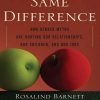Environmental and Ecological Statistics with R Second 2nd Edition by Song Qian 1498728723 9781498728720
$70.00 Original price was: $70.00.$35.00Current price is: $35.00.
Instant download Environmental and Ecological Statistics with R Second 2nd Edition after payment
Instant download Environmental and Ecological Statistics with R Second 2nd Edition pdf, docx, kindle format all chapters after payment. 1498728723, 9781498728720

Product details:
Table of contents:
1.1 Tool for Inductive Reasoning
1.2 The Everglades Example
1.2.1 Statistical Issues
1.3 Effects of Urbanization on Stream Ecosystems
1.3.1 Statistical Issues
1.4 PCB in Fish from Lake Michigan
1.4.1 Statistical Issues
1.5 Measuring Harmful Algal Bloom Toxin
1.6 Bibliography Notes
1.7 Exercise
2 A Crash Course on R
2.1 What is R?
2.2 Getting Started with R
2.2.1 R Commands and Scripts
2.2.2 R Packages
2.2.3 R Working Directory
2.2.4 Data Types
2.2.5 R Functions
2.3 Getting Data into R
2.3.1 Functions for Creating Data
2.3.2 A Simulation Example
2.4 Data Preparation
2.4.1 Data Cleaning
2.4.1.1 Missing Values
2.4.2 Subsetting and Combining Data
2.4.3 Data Transformation
2.4.4 Data Aggregation and Reshaping
2.4.5 Dates
2.5 Exercises
3 Statistical Assumptions
3.1 The Normality Assumption
3.2 The Independence Assumption
3.3 The Constant Variance Assumption
3.4 Exploratory Data Analysis
3.4.1 Graphs for Displaying Distributions
3.4.2 Graphs for Comparing Distributions
3.4.3 Graphs for Exploring Dependency among Variables
3.5 From Graphs to Statistical Thinking
3.6 Bibliography Notes
3.7 Exercises
4 Statistical Inference
4.1 Introduction
4.2 Estimation of Population Mean and Confidence Interval
4.2.1 Bootstrap Method for Estimating Standard Error
4.3 Hypothesis Testing
4.3.1 t-Test
4.3.2 Two-Sided Alternatives
4.3.3 Hypothesis Testing Using the Confidence Interval
4.4 A General Procedure
4.5 Nonparametric Methods for Hypothesis Testing
4.5.1 Rank Transformation
4.5.2 Wilcoxon Signed Rank Test
4.5.3 Wilcoxon Rank Sum Test
4.5.4 A Comment on Distribution-Free Methods
4.6 Significance Level α, Power 1 – β, and p-Value
4.7 One-Way Analysis of Variance
4.7.1 Analysis of Variance
4.7.2 Statistical Inference
4.7.3 Multiple Comparisons
4.8 Examples
4.8.1 The Everglades Example
4.8.2 Kemp’s Ridley Turtles
4.8.3 Assessing Water Quality Standard Compliance
4.8.4 Interaction between Red Mangrove and Sponges
4.9 Bibliography Notes
4.10 Exercises
II Statistical Modeling
5 Linear Models
5.1 Introduction
5.2 From t-test to Linear Models
5.3 Simple and Multiple Linear Regression Models
5.3.1 The Least Squares
5.3.2 Regression with One Predictor
5.3.3 Multiple Regression
5.3.4 Interaction
5.3.5 Residuals and Model Assessment
5.3.6 Categorical Predictors
5.3.7 Collinearity and the Finnish Lakes Example
5.4 General Considerations in Building a Predictive Model
5.5 Uncertainty in Model Predictions
5.5.1 Example: Uncertainty in Water Quality Measurements
5.6 Two-Way ANOVA
5.6.1 ANOVA as a Linear Model
5.6.2 More Than One Categorical Predictor
5.6.3 Interaction
5.7 Bibliography Notes
5.8 Exercises
6 Nonlinear Models
6.1 Nonlinear Regression
6.1.1 Piecewise Linear Models
6.1.2 Example: U.S. Lilac First Bloom Dates
6.1.3 Selecting Starting Values
6.2 Smoothing
6.2.1 Scatter Plot Smoothing
6.2.2 Fitting a Local Regression Model
6.3 Smoothing and Additive Models
6.3.1 Additive Models
6.3.2 Fitting an Additive Model
6.3.3 Example: The North American Wetlands Database
6.3.4 Discussion: The Role of Nonparametric Regression Models in Science
6.3.5 Seasonal Decomposition of Time Series
6.3.5.1 The Neuse River Example
6.4 Bibliographic Notes
6.5 Exercises
7 Classification and Regression Tree
7.1 The Willamette River Example
7.2 Statistical Methods
7.2.1 Growing and Pruning a Regression Tree
7.2.2 Growing and Pruning a Classification Tree
7.2.3 Plotting Options
7.3 Comments
7.3.1 CART as a Model Building Tool
7.3.2 Deviance and Probabilistic Assumptions
7.3.3 CART and Ecological Threshold
7.4 Bibliography Notes
7.5 Exercises
8 Generalized Linear Model
8.1 Logistic Regression
8.1.1 Example: Evaluating the Effectiveness of UV as a Drinking Water Disinfectant
8.1.2 Statistical Issues
8.1.3 Fitting the Model in R
8.2 Model Interpretation
8.2.1 Logit Transformation
8.2.2 Intercept
8.2.3 Slope
8.2.4 Additional Predictors
8.2.5 Interaction
8.2.6 Comments on the Crypto Example
8.3 Diagnostics
8.3.1 Binned Residuals Plot
8.3.2 Overdispersion
8.3.3 Seed Predation by Rodents: A Second Example of Logistic Regression
8.4 Poisson Regression Model
8.4.1 Arsenic Data from Southwestern Taiwan
8.4.2 Poisson Regression
8.4.3 Exposure and Offset
8.4.4 Overdispersion
8.4.5 Interactions
8.4.6 Negative Binomial
8.5 Multinomial Regression
8.5.1 Fitting a Multinomial Regression Model in R
8.5.2 Model Evaluation
8.6 The Poisson-Multinomial Connection
8.7 Generalized Additive Models
8.7.1 Example: Whales in the Western Antarctic Peninsula
8.7.1.1 The Data
8.7.1.2 Variable Selection Using CART
8.7.1.3 Fitting GAM
8.7.1.4 Summary
8.8 Bibliography Notes
8.9 Exercises
III Advanced Statistical Modeling
9 Simulation for Model Checking and Statistical Inference
9.1 Simulation
9.2 Summarizing Regression Models Using Simulation
9.2.1 An Introductory Example
9.2.2 Summarizing a Linear Regression Model
9.2.2.1 Re-transformation Bias
9.2.3 Simulation for Model Evaluation
9.2.4 Predictive Uncertainty
9.3 Simulation Based on Re-sampling
9.3.1 Bootstrap Aggregation
9.3.2 Example: Confidence Interval of the CART-Based Threshold
9.4 Bibliography Notes
9.5 Exercises
10 Multilevel Regression
10.1 From Stein’s Paradox to Multilevel Models
10.2 Multilevel Structure and Exchangeability
10.3 Multilevel ANOVA
10.3.1 Intertidal Seaweed Grazers
10.3.2 Background N2O Emission from Agriculture Fields
10.3.3 When to Use the Multilevel Model?
10.4 Multilevel Linear Regression
10.4.1 Nonnested Groups
10.4.2 Multiple Regression Problems
10.4.3 The ELISA Example—An Unintended Multilevel Modeling Problem
10.5 Nonlinear Multilevel Models
10.6 Generalized Multilevel Models
10.6.1 Exploited Plant Monitoring—Galax
10.6.1.1 A Multilevel Poisson Model
10.6.1.2 A Multilevel Logistic Regression Model
10.6.2 Cryptosporidium in U.S. Drinking Water—A Poisson Regression Example
10.6.3 Model Checking Using Simulation
10.7 Concluding Remarks
10.8 Bibliography Notes
10.9 Exercises
11 Evaluating Models Based on Statistical Significance Testing
11.1 Introduction
11.2 Evaluating TITAN
11.2.1 A Brief Description of TITAN
11.2.2 Hypothesis Testing in TITAN
11.2.3 Type I Error Probability
11.2.4 Statistical Power
11.2.5 Bootstrapping
11.2.6 Community Threshold
11.2.7 Conclusions
11.3 Exercises
People also search:
environmental or ecological factors
ecological environment examples
an ecologic study quizlet
an ecologist who was studying starfish
statistics and environmental science


